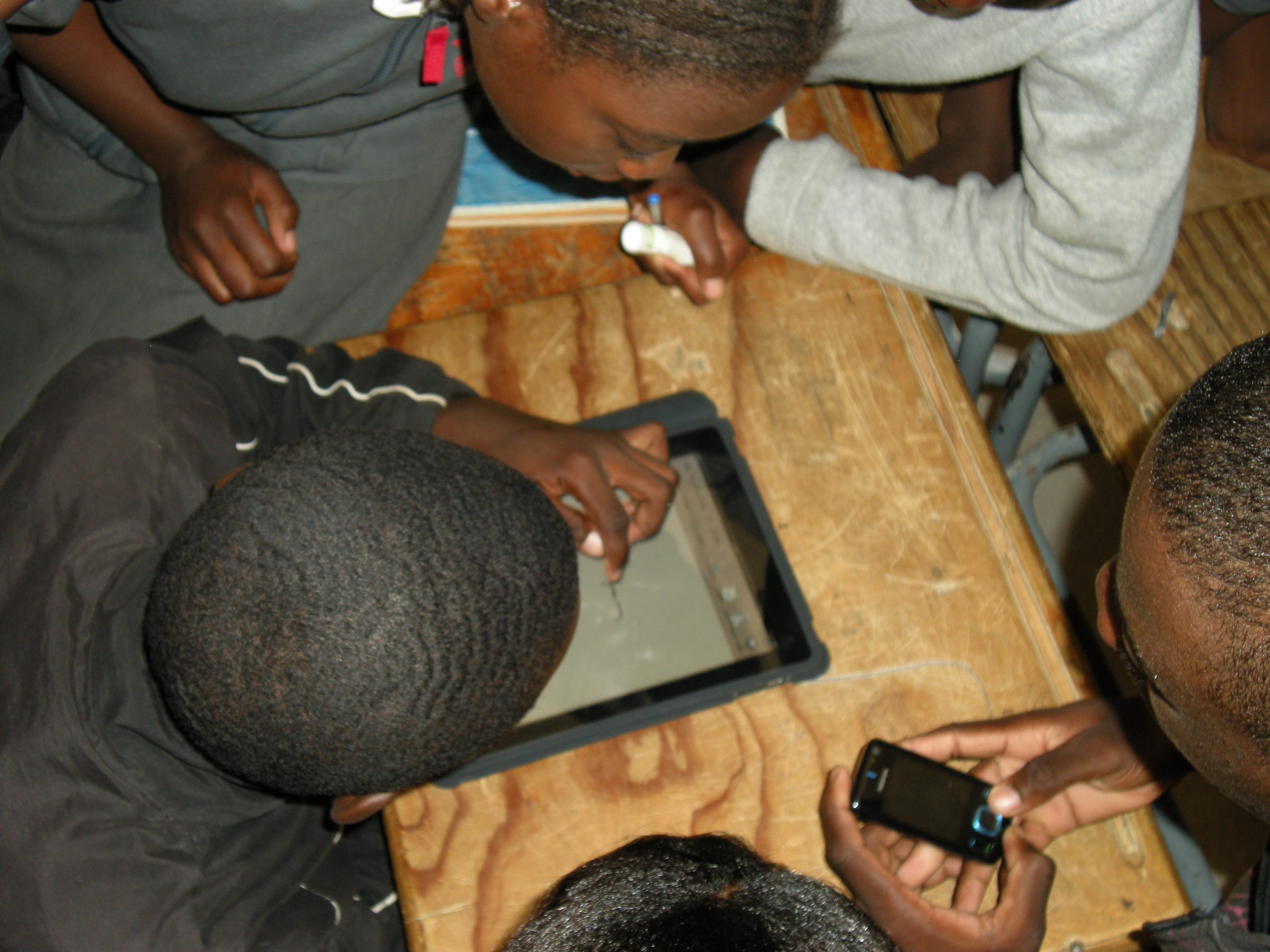Conversations on Screen Time Before vs During COVID19

I saw a picture today of a child sleeping in front of a computer. Seemingly the three-year-old has “been learning online” to the point that she fell asleep at the computer. The caption mentions #homeschooling #onlinelearning. The computer screen has what looks like a colouring activity, so not something overly taxing from an adult standpoint. This image evoked a reaction for me about the unintended consequences of moving everyone online.
I am seriously questioning the logic of sending everyone online, even small children. If we are honest, we will admit that some of these activities are not designed for kids to learn but to keep them busy while adults do other things. After all, adults too, are forced by circumstances to work from home. This post is not about the validity of moving everyone online (that will come in another post), but more about a research area that I have been interested in for a while: screen time.
For years now, we have been researching the effects of screen time on children in different disciplines. I saw some of this research when I was a media studies student as it relates to how much TV children should watch. I reencountered this research as it relates to mobile devices in terms of how much time a child should be using a tablet etc. Some research explored the effects of light from devices, while others focused on the developmental processes of young learners. So, while the global reaction to coronavirus as it relates to formal schooling seems to have taken the approach of…everyone goes online….I am left to wonder what has happened to the research of screen time. Will we find out later that the cure for schools shutdowns has led to other unintended consequences?
I am certain studies in the coming years will answer these questions and many others. Also, I am not making a recommendation in either direction because everyone is trying to make sense of this time (hopefully), the best way they know-how. I am just sharing what people have been saying about screen time before COVID19 and what people are now thinking during the coronavirus era. The list is not exhaustive, just what I found on a quick research while procrastinating on a TechTrends issue…let’s hope Chuck Hodges the editor, does not read this.
Writing on Screen Time before COVID19
(Let me know of others than I can add to the list)
- The Dana Foundation – The Truth About Research on Screen Time – “what can the neuroscientific literature tell us about how device use is affecting normal brain development? How should it shape how parents consider their children’s device use at home and at school? The questions, neuroscientists agree, are not simple to answer, largely because it is difficult to design a balanced, controlled study to investigate the matter.”
https://www.dana.org/article/the-truth-about-research-on-screen-time/ - Journalist’s Resource – A project of Harvard Kennedy School’s Shorenstein Center and the Carnegie-Knight Initiative. The health effects of screen time on children: A research roundup
https://journalistsresource.org/studies/society/public-health/screen-time-children-health-research/ - New Research: How Much Screen Time Is Bad for Kids? – Sitting in front of a screen is bad for you. Then it’s good for you. Then it’s bad for you again. But, like, only a bit.
https://www.forbes.com/sites/jamiemadigan/2019/08/05/new-research-how-much-screen-time-is-bad-for-kids/#58a16eb04d30 - MRIs show screen time linked to lower brain development in preschoolers – Screen time use by infants, toddlers and preschoolers has exploded over the last decade, concerning experts about the impact of television, tablets and smartphones on these critical years of rapid brain development. Now a new study scanned the brains of children 3 to 5 years old and found those who used screens more than the recommended one hour a day without parental involvement had lower levels of development in the brain’s white matter — an area key to the development of language, literacy and cognitive skills.
https://www.cnn.com/2019/11/04/health/screen-time-lower-brain-development-preschoolers-wellness/index.html - Michigan Health Lab – Michigan Medicine – University of Michigan. A Better Way To Study “Screen Time” Technology’s impact on children: How can we improve the research? Michigan child development researcher leads session at Pediatric Academic Societies meeting. https://labblog.uofmhealth.org/rounds/a-better-way-to-study-screen-time
- Harvard Medical School – Screen Time and the Brain. Digital devices can interfere with everything from sleep to creativity
https://hms.harvard.edu/news/screen-time-brain
Journal Articles
- Screen Time and Sleep among School-Aged Children and Adolescents: A Systematic Literature Review.
Examined and updated the scientific literature on the association between screen time (e.g., television, computers, video games, and mobile devices) and sleep outcomes among school-aged children and adolescents.
Hale, L., & Guan, S. (2015). Screen time and sleep among school-aged children and adolescents: a systematic literature review. Sleep medicine reviews, 21, 50-58. - Relationship between screen time and metabolic syndrome in adolescents
Primary objective was to determine the dose–response relation between screen time (television + computer) and the metabolic syndrome (MetS) in adolescents. Screen time was associated with an increased likelihood of MetS in a dose-dependent manner independent of physical activity. These findings suggest that lifestyle-based public health interventions for youth should include a specific component aimed at reducing screen time.
Amy E. Mark, M.sc., Ian Janssen, Ph.D., Relationship between screen time and metabolic syndrome in adolescents, Journal of Public Health, Volume 30, Issue 2, June 2008, Pages 153–160, https://doi.org/10.1093/pubmed/fdn022 - Time for a view on screen time
Sigman, A. (2012). Time for a view on screen time. Archives of disease in childhood, 97(11), 935-942. - Television viewing, computer use and total screen time in Canadian youth
Research has linked excessive television viewing and computer use in children and adolescents to a variety of health and social problems. Current recommendations are that screen time in children and adolescents should be limited to no more than 2 h per day. Findings indicate that fewer than 20% of Canadian youth in grades 6 to 10 met the total screen time guidelines, suggesting that increased public health interventions are needed to reduce the number of leisure time hours that Canadian youth spend watching television and using the computer.
Mark, A. E., Boyce, W. F., & Janssen, I. (2006). Television viewing, computer use and total screen time in Canadian youth. Paediatrics & child health, 11(9), 595-599. - A Randomized Controlled Trial of Culturally Tailored Dance and Reducing Screen Time to Prevent Weight Gain in Low-Income African American Girls
Objective was to test a 2-year community- and family based obesity prevention program for low-income African American girls: Stanford GEMS (Girls’ health Enrichment Multi-site Studies). Researchers concluded that a culturally tailored after-school dance and screen time reduction intervention for low-income, preadolescent African American girls did not significantly reduce BMI gain compared with health education but did produce potentially clinically important reductions in lipid levels, hyperinsulinemia, and depressive symptoms. There was also evidence for greater effectiveness in high-risk subgroups of girls.
Robinson, T. N., Matheson, D. M., Kraemer, H. C., Wilson, D. M., Obarzanek, E., Thompson, N. S., … & Varady, A. (2010). A randomized controlled trial of culturally tailored dance and reducing screen time to prevent weight gain in low-income African American girls: Stanford GEMS. Archives of pediatrics & adolescent medicine, 164(11), 995-1004. - The South African 24-hour movement guidelines for birth to five years: an integration of physical activity, sitting behaviour, screen time and sleep
In December 2018, the South African (SA) 24-hour movement guidelines for birth to five years were released. This paper describes the process used to developthese guidelines.
Draper, C. E., Tomaz, S. A., Biersteker, L., Cook, C. J., Couper, J., de Milander, M., … & Liebenberg, T. (2020). The South African 24-Hour Movement Guidelines for Birth to 5 Years: An Integration of Physical Activity, Sitting Behavior, Screen Time, and Sleep. Journal of Physical Activity and Health, 17(1), 109-119. - Effects of screentime on the health and well-being of children and adolescents: a systematic review of reviews
Goal was to systematically examine the evidence of harms and benefits relating to time spent on screens for children and young people’s (CYP) health and well-being, to inform policy. Researchers concluded that there is evidence that higher levels of screentime is associated with a variety of health harms for CYP, with evidence strongest for adiposity, unhealthy diet, depressive symptoms and quality of life. Evidence to guide policy on safe CYP screentime exposure is limited.
Stiglic, N., & Viner, R. M. (2019). Effects of screentime on the health and well-being of children and adolescents: a systematic review of reviews. BMJ open, 9(1), e023191. - What explains the socioeconomic status gap in activity? Educational differences in determinants of physical activity and screentime
Researchers aimed to investigate a comprehensive range of potential theoretical mediators of physical activity (PA) and screen time in different socioeconomic status (SES) groups. This study revealed that already in the first years of educational differentiation, levels of key Physical Activity determinants differ, contributing to socioeconomic differences in PA. The analyses identified the strongest mediators of the socioeconomic status-physical activity association, but additional investigation utilising longitudinal and experimental designs are needed. This study demonstrates the usefulness of combining constructs from various theoretical approaches to better understand the role of distinct mechanisms that underpin socioeconomic health behaviour disparities.
Hankonen, N., Heino, M. T., Kujala, E., Hynynen, S. T., Absetz, P., Araújo-Soares, V., … & Haukkala, A. (2017). What explains the socioeconomic status gap in activity? Educational differences in determinants of physical activity and screentime. BMC Public Health, 17(1), 144.
What is being written about Screen Time during COVID19
(Let me know of others than I can add to the list)
- Rethinking screen-time in the time of COVID-19. How can families make the most of increased reliance on screens — which are helping to maintain a sense of normalcy during lockdown — while also finding the right balance with other important activities?
https://www.unicef.org/globalinsight/stories/rethinking-screen-time-time-covid-19 - How Much Screen Time Is Too Much in the COVID-19 Era? The old rules are out the window. Strike a healthy balance when connection is more important than ever.
https://health.usnews.com/wellness/for-parents/articles/screen-time-during-the-coronavirus-pandemic-how-much-is-too-much - Screen time in COVID-19 crisis: ‘It is about the content and context’
https://globalnews.ca/news/6828055/family-matters-covid-19-screen-time/ - The coronavirus lockdown is forcing us to view ‘screen time’ differently. That’s a good thing
https://theconversation.com/the-coronavirus-lockdown-is-forcing-us-to-view-screen-time-differently-thats-a-good-thing-135641 - Forget old screen ‘time’ rules during coronavirus. Here’s what you should focus on instead
https://theconversation.com/forget-old-screen-time-rules-during-coronavirus-heres-what-you-should-focus-on-instead-135053 - Coronavirus: 5 tips for navigating children’s screen time during social distancing
https://theconversation.com/coronavirus-5-tips-for-navigating-childrens-screen-time-during-social-distancing-134445

